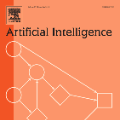We are facing a global healthcare crisis today as the healthcare cost is ever climbing, but with the aging population, government fiscal revenue is ever dropping. To create a more efficient and effective healthcare system, three technical challenges immediately present themselves: healthcare access, healthcare equity, and healthcare efficiency. An autonomous mobile clinic solves the healthcare access problem by bringing healthcare services to the patient by the order of the patient's fingertips. Nevertheless, to enable a universal autonomous mobile clinic network, a three-stage technical roadmap needs to be achieved: In stage one, we focus on solving the inequity challenge in the existing healthcare system by combining autonomous mobility and telemedicine. In stage two, we develop an AI doctor for primary care, which we foster from infancy to adulthood with clean healthcare data. With the AI doctor, we can solve the inefficiency problem. In stage three, after we have proven that the autonomous mobile clinic network can truly solve the target clinical use cases, we shall open up the platform for all medical verticals, thus enabling universal healthcare through this whole new system.
翻译:医疗成本不断攀升,但随着人口老化,我们面临着全球医疗危机。为了创建更高效、更有效的医疗体系,政府财政收入正在不断下降。为了创建更高效、更有效的医疗体系,我们马上面临三个技术挑战:医疗保健机会、医疗公平和医疗效率。一个自主流动诊所通过病人指尖的顺序向病人提供医疗保健服务来解决医疗保健获取问题。然而,为了实现一个普遍的自主流动诊所网络,需要实现一个三阶段的技术路线图:在第一阶段,我们的重点是通过将自主行动与远程医疗相结合,解决现有医疗体系中的不平等挑战。在第二阶段,我们开发了一名初级医疗的AI医生,我们用清洁的医疗保健数据从婴儿到成年,我们培育了这种医生。与AI医生一起,我们可以解决低效率问题。在第三阶段,在我们已经证明自主流动诊所网络能够真正解决目标临床使用案例之后,我们将为所有垂直医疗系统打开平台,从而能够通过整个新系统实现全民医疗保健。




